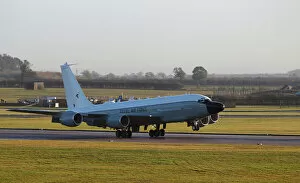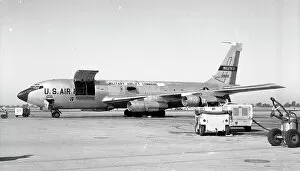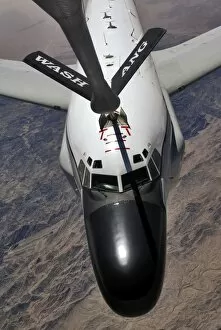Rc 135 Collection
The RC-135, also known as the Rivet Joint aircraft, is a crucial asset in the United States Air Force's arsenal
For sale as Licensed Images
Choose your image, Select your licence and Download the media
The RC-135, also known as the Rivet Joint aircraft, is a crucial asset in the United States Air Force's arsenal. One such variant of this remarkable plane is the Boeing WC-135B 61-2666. Recently, history was made when the first Rivet Joint Aircraft landed at RAF Waddington, marking a significant milestone for both nations. With its advanced capabilities and cutting-edge technology, the RC-135W Rivet Joint aircraft has proven to be an invaluable tool for reconnaissance missions. Flying over various regions like the Midwest, it gathers vital intelligence that aids in national security efforts. In some instances, we witness other impressive aircraft accompanying the RC-135W on its missions. The E-8C Joint Surveillance Target Attack Radar System (Joint STARS) and another variant of the Rivet Joint aircraft - RC-135V/W - join forces to enhance surveillance operations. During these high-stakes flights over America's heartland, aerial refueling becomes essential for extended mission durations. In awe-inspiring displays of precision and coordination, KC-135 Stratotankers provide fuel to keep these powerful machines soaring through the skies. As each RC-135 Rivet Joint reconnaissance aircraft moves into position to refuel or receives fuel mid-air from a tanker plane above vast landscapes or bustling cities below, their importance becomes evident. These planes are not just symbols of military might but rather guardians protecting our nation by gathering critical information. The dedication and expertise behind every flight ensure that our armed forces stay one step ahead in an ever-evolving world. The men and women who operate these magnificent birds deserve recognition for their unwavering commitment to safeguarding our freedom. So next time you catch sight of an RC-135W Rivet Joint flying overhead or hear about its groundbreaking achievements like landing at RAF Waddington or conducting successful surveillance missions across America's heartland – remember that it represents more than just an aircraft.








